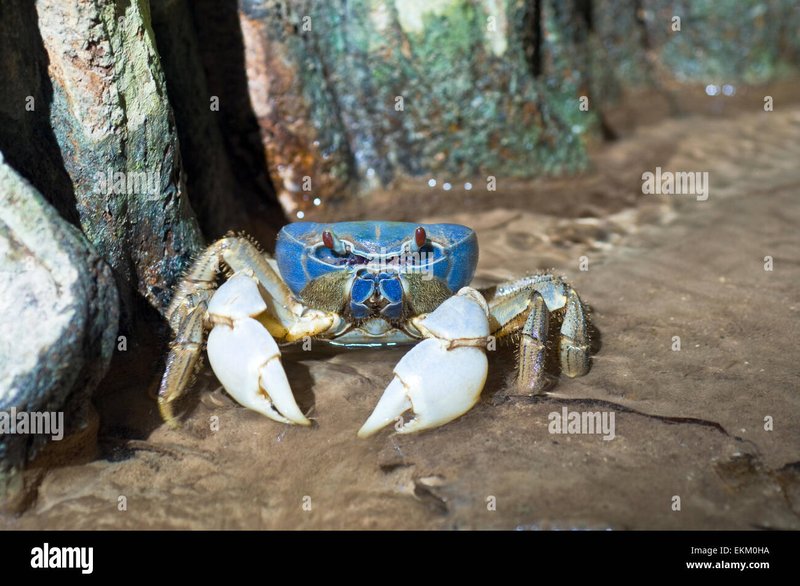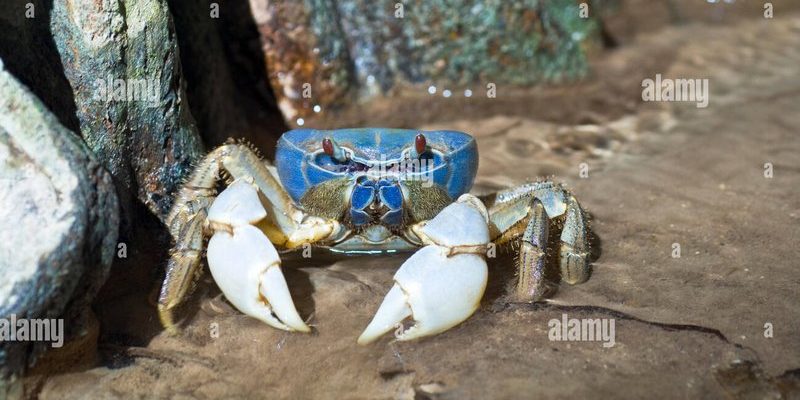
What Do Blue Crabs Eat?
Blue crabs have a diverse diet that includes a variety of food sources. They are opportunistic feeders, which means they take advantage of whatever is available. Here’s a closer look at what typically makes up a blue crab’s meals:
- Fish: Small fish like menhaden and mullet are on the menu. These crabs are skilled hunters and will chase down their prey when they can.
- Mollusks: Clams and oysters are favorites. Blue crabs have strong claws that can break open shells with ease, allowing them to get to the tasty meat inside.
- Worms: Marine worms also make a good snack, providing essential nutrients.
- Plant Matter: They munch on seagrass, algae, and other aquatic plants, which play a role in their overall health.
You might be wondering how blue crabs find their food. They rely heavily on their sense of smell—it’s amazing how well they can sniff out a meal from a distance!
Feeding Techniques of Blue Crabs
Blue crabs are equipped with some nifty tools for foraging, mainly their claws and mouthparts. They use their pincers to grab, crush, and manipulate their food, which allows them to tackle a wide range of prey. Here’s how they go about it:
– Foraging: Blue crabs often scuttle along the ocean floor, searching for hidden treasures among the sand and mud. Their lateral eyes help them spot potential snacks from afar.
– Burrowing: When prey is buried in the sand, blue crabs can dig in, using their claws to unearth clams or worms. This skill is especially handy when the tides wash away more accessible food.
– Scavenging: They’re not above scavenging, meaning they’ll happily munch on dead fish or other marine animals they come across. This trait helps keep their ecosystem clean and thriving.
Let’s not forget the role of social behavior in feeding. Sometimes, blue crabs may gather in groups to take down larger prey or even compete for food.
Seasonal Changes and Blue Crab Diet
The diet of blue crabs is not static; it changes with the seasons. During warmer months, when food is abundant, they tend to eat more. In colder months, their activity decreases, and so does their food intake. Here’s a breakdown of how the seasons impact their feeding habits:
– Spring and Summer: This is peak feeding season. The waters are teeming with life, and blue crabs feast on fish, mollusks, and plants. They also grow rapidly during this time, requiring plenty of nutrition.
– Fall: As temperatures drop, blue crabs begin to prepare for winter. They may eat more to build up fat reserves, relying on available food sources like carrion.
– Winter: In winter, blue crabs become less active and enter a sort of hibernation. They might eat whatever they can find but generally consume less food until spring arrives.
Understanding these seasonal changes is key for anyone interested in crab fishing or studying their behavior.
The Role of Blue Crabs in the Ecosystem
Blue crabs play a vital role in their ecosystems. As predators, they help control the populations of their prey, which contributes to the balance of marine life. Here’s how their feeding habits impact the environment:
– Regulating Prey Populations: By eating fish and mollusks, blue crabs help maintain those populations at a healthy level. This prevents overpopulation and keeps the ecosystem in check.
– Nutrient Cycling: When blue crabs consume dead organic material, they help decompose it, returning nutrients to the seabed, which promotes plant growth.
– Interaction with Other Species: Blue crabs also serve as prey for larger animals, like fish and birds. Their presence in the food chain supports a variety of wildlife.
In many ways, blue crabs are like the unsung heroes of the marine ecosystem. Their diverse diet and feeding habits contribute significantly to the health of their environment.
How to Catch Blue Crabs: Understanding Their Feeding Habits
If you’re interested in catching blue crabs, understanding their feeding habits can give you a real edge. Here are some tips to keep in mind:
– Timing is Key: Since blue crabs are more active during warmer months and specific times of day, plan your crabbing trips accordingly. Early mornings or late afternoons are often the best times to find them out and about.
– Choose the Right Bait: Use bait that mimics their natural diet. Common choices include chicken necks, fish heads, or even clams. These will attract blue crabs and entice them to your traps.
– Know Their Habitats: Blue crabs prefer shallow waters, especially near marshes and estuaries. Look for areas with structure—like docks or rocks—where they can hide.
You might find it helpful to observe their behavior before trying to catch them. This way, you can get a sense of where they are most likely to be feeding.
So, next time you see a blue crab, remember there’s a lot more to it than just its playful demeanor! From their diverse diet to their clever feeding techniques, blue crabs are remarkable creatures that play an important role in our aquatic ecosystems. Understanding their feeding habits not only helps us appreciate them more but also guides those looking to catch them responsibly.
Whether you’re enjoying a delicious crab feast at a local seafood restaurant or catching your own for dinner, the journey of the blue crab from ocean floor to plate is a culinary adventure worth celebrating. So, let’s keep our oceans clean and respect these amazing little critters that contribute so much to our marine world.

